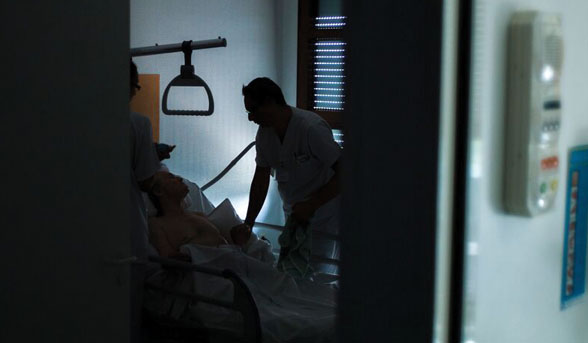As the US health-care system struggles with a labor shortage, a renewed focus on recruiting can only help.
By The Editors – as appeared in https://www.bloomberg.com
In less than two years, the US could face a shortage of up to 450,000 nurses. The health-care system won’t be able to fill this gap with half the potential workforce on the sidelines: More must be done to recruit men into nursing.
Men currently comprise about 12% of nurses, up from less than 3% in 1970. Boosting their number would not only ease shortages, but offer a pathway to good jobs for a demographic that has been exiting the workforce in alarming numbers in recent years. Employment growth in some traditionally male sectors, such as manufacturing, has all but vanished.
Yet men traditionally haven’t entered nursing because, much like teaching, it’s stigmatized as a female profession — the term “male nurse” is a case in point. Men in nursing tend to be career-switchers, and often include former members of the military, police officers and firefighters. In short: civic-minded workers drawn to the six-figure salaries, career progression and flexible schedules, with the added bonus of not having to sit behind a desk.
Recruiting more of them could have pronounced benefits. Ample research suggests that diversity in the health-care workforce improves care. Studies have shown that visits are longer and patients are more satisfied when they share the same race or ethnicity as their provider, which can have a cascade of positive effects including improved communication, deeper trust and stricter adherence to medical advice. Evidence that patients prefer same-gender providers is also starting to emerge.
The needs among the patient population can’t be overstated. Native American, Black and Hispanic men experienced the biggest declines in life expectancy during the pandemic and remain among the least represented demographics in the nursing workforce. Male school nurses (and teachers) are also at the frontlines of a burgeoning teen mental-health crisis: Adolescent boys are both less likely to seek treatment and more likely to die by suicide. The American Psychological Association has long identified the need for gender-specific care for teen boys, who might have a harder time confiding in women.
Although addressing the nursing shortage has strong bipartisan support, increasing male representation has been largely absent from discussions. That’s a mistake. To start, lawmakers should follow the tested model of encouraging women in STEM. Recent legislation, for example, directed the National Science Foundation to channel more of its K-12 funding to elementary and pre-K-age students to encourage STEM careers earlier in the pipeline. Similar efforts should be made for nursing, not least because a recent NSF report on diversity expanded the definition of STEM to include health-care workers. Some nursing schools engage middle- and high-schoolers in their communities to reduce stigma and highlight nursing as a viable career path; they should make every effort to include male faculty and nursing students as role models. Although it might prove politically unpalatable, targeting scholarship funding and loan-forgiveness programs to male nursing students would also make sense.
Of course, men aren’t immune to the broader forces driving the nursing shortage. In particular, nursing schools are so resource-strapped that they turn thousands of qualified applicants away each year. State and federal efforts to boost the number of nursing instructors, increase stipends (and forgive loans) for doctoral students, and broaden access to training facilities (in person or online) need to be accelerated.
Yet a renewed focus on recruiting men can only help. Bringing men to parity in the field would add some 3.5 million nurses today. Hitting even a fraction of that figure would be a significant milestone and improve the lives of millions of Americans. It’s a long-term investment the industry can justify.













